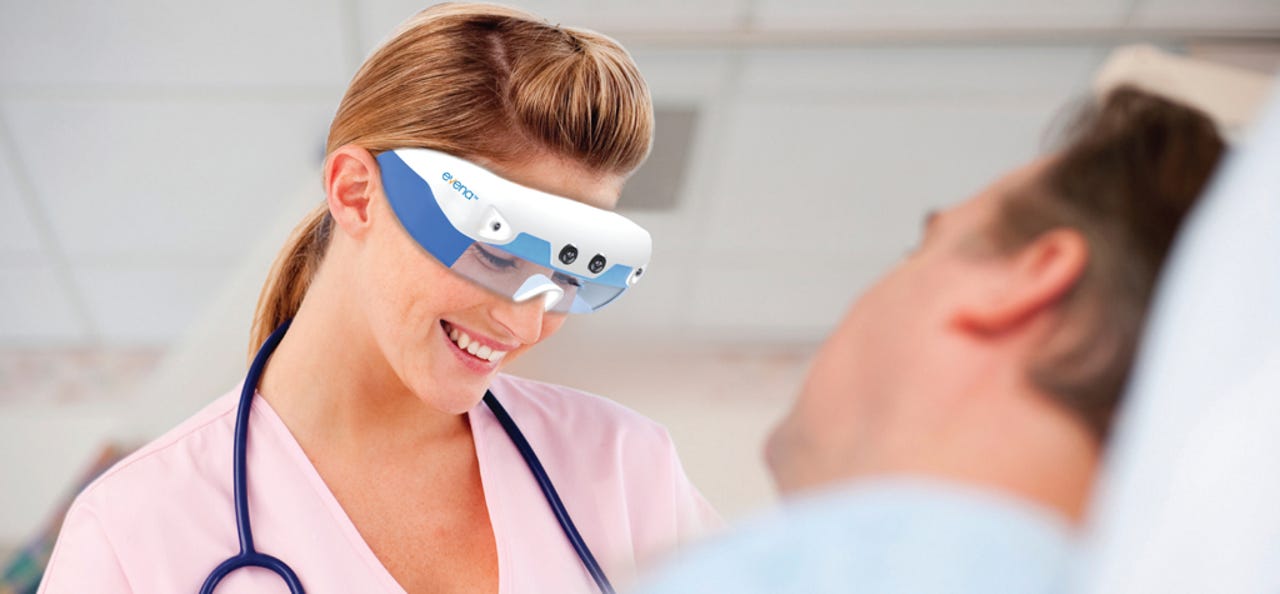Wearables in business: Five companies getting real work done


Wearable technology is still waiting for its breakthrough product to gain traction with consumers. However, wearables have begun to grow in popularity with the enterprise, where specific use cases and niche applications make them a valuable tool.
"Wearable devices represent the next phase of this mobile revolution. Perpetually connected wearables will enable workers, partners, and customers to experience new levels of immediacy, simplicity, and context in their mobile computing experiences. Wearables aren't just a consumer phenomenon: they have the potential to change the way organizations and workers conduct business," Forrester's J.P. Gownder said in report on enterprise wearables.
According to Gownder, the potential for enterprise wearables adoption is growing. Much of that potential has to do with the high priority for enterprise mobile strategy, with 49 percent of IT decision-makers saying mobile is a high or critical priority for employees, and 46 percent saying it's a high or critical priority for customers and partners.
Here are five companies that have deployed wearable technology to improve business processes.
Abseilon
Abseilon is an Arizona-based company that provides work-at-height and rope-access solutions. Abseilon technicians will set up rope systems to access areas that are inaccessible by traditional methods and offer services such as inspection, surveying, maintenance, and construction. The company uses a wearable camera made by Vidcie to document the work and stream video to people such as engineers or lawyers to give a birds-eye view of what's happening.
"More often than not we make dozens of phone calls to our engineer on a regular basis. When we are on a project, and we need guidance in a specific situation, we just just turn the camera on and have him view what's going on and make recommendations," Kenneth Piposar, vice president of Abseilon, said. "It gives him eyes on the job and on the project. It works very well in that aspect."
Erik Newton, the senior director of product marketing at Vidcie, said that there were certain things the company needed to keep in mind as they built out the product for the enterprise.
"Flexibility, scalability, integratability, these are the requirements for enterprise wearables. So, you need to be able to take your system and integrate it into the existing IT infrastructure that the customer has," Newton said.
Stanford University Medical Center
The Stanford University Medical Center, which houses the main teaching hospital for Stanford University, routinely ranks as one of the best medical centers in the US. It's known for its work in geriatrics and neuroscience, but is also investing in technological advances.
Alongside the University of California, San Francisco and Kaiser Permanente, Stanford is working with the Eyes-On Glasses from Evena Medical. Built on a Vuzix platform, and boasting proprietary software, the Eyes-On glasses give medical practitioners an outline of the patient's veins to help in guiding a needle.
"We use a technology that uses simple light to image under the skin to make the vasculature completely visible to the practitioner. By being able to see what they're sticking, it increases their probability of a successful first attempt dramatically," said Frank Ball, CEO of Evena Medical.
According to Ball, the goal of the device is to improve workflow and enhance patient satisfaction. He said that a big part of getting the device right was building a human interface.
Capriotti's Sandwich Shop
Capriotti's is a Las Vegas-based chain of sandwich shops that has locations around the US. The company is known for its submarine sandwiches, and is also known for how busy it gets during the lunch rush. The company began looking for a tool to help it record and review the rush time, and ended up with Google Glass.
According to Jason Smylie, the CIO/CMO of Capriotti’s, Glass has allowed leadership to sit down and go over each rush time and look for opportunities for improvement — in a similar way to athletes reviewing game tapes with their coach.
"Glass has allowed us to engage employees with their training in a meaningful way. They think it's really exciting and fun to wear," Smylie said. "The first time people wear it they either say it's really cool or really weird. It's also expanded how we film training videos by freeing up our hands to demonstrate the proper way to make our sandwiches and give the viewer a first-person perspective. By also having managerial trainees wear Glass and record guest interactions, it has given us an opportunity to review and critique managerial performances in a whole new way."
Smylie said the goal of using Glass is to improve performance of the employees at Capriotti's, but the company is limited by the battery, which Smylie said only lasts about 30 minutes when recording.
The Container Store
The Container Store, a Texas-based provider of storage solutions, is known for its employee-focused culture. So much so, that it's routinely placed on Fortune's 100 Best Companies to Work For list. In an effort to better equip its employees, The Container Store rolled out the Theatro Wearable Computer to improve communication and development.
The Theatro Wearable Computer is a small plastic box that can clip to a shirt or lapel, and has a nine-hour battery life. Employees use it much like a walkie-talkie to communicate with each other and communicate to the store. It has a big button on the front and three smaller buttons on the side. On pressing the front button, users can initiate voice commands and communicate.
"Because it has both broadcast and one-to-one communication capabilities, we have seen dramatic decreases in the number of broadcast messages that were really just conversations between two people who had no alternative but to broadcast," said John Thrailkill, vice president of store metrics and systems for The Container Store. "Most importantly, we have seen an increase in overall communication — about 20 percent more than with the walkie-talkies — while each individual user saw a 60 percent decrease in the number of messages that they personally heard. By removing the 'noise,' we have better response times to requests for help and there is no need to 'tune out' things that are not for that employee."
The device requires a wi-fi connection, but that allows it to do more than just facilitate communication. Employees can learn the location of one of their colleagues or create custom groups for targeted messages. Being that the device is technically a wearable computer, Thrailkill is excited about the potential future applications that can be created.
Hitachi
Hitachi, the Tokyo-based engineering and electronics company, is one of the few companies that's using a proprietary wearable in its organization. In order to better measure and manage employee communication and interaction, Hitachi developed the Hitachi Business Microscope, an ID card-like device that's worn around employees' necks to gather data.
"Multiple sensor devices are placed inside a nameplate type sensor that is attached to company employees. When the name tag sensors come within a specified distance of each other, they recognize each other and record the face time, body, and behavior rhythm data to a server," the company's website says.
The goal is to plot employee networks and better understand how certain people interact and collaborate. The device contains a microphone, an accelerometer, infrared sensors and other data-collection devices. The device can even measure how far away you stand from someone when you're speaking to them. At the end of the day, employees place their badge in a stand and the data is sent to Hitachi's servers.
Further reading